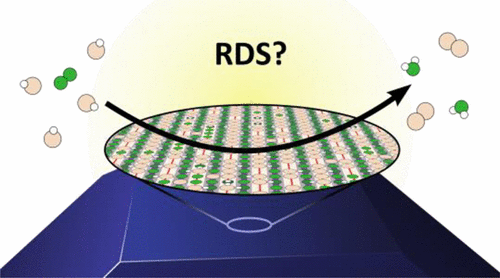Rate-Determining Step or Rate-Determining Configuration? The Deacon Reaction over RuO2(110) Studied by DFT-Based KMC Simulations
Published:

Abstract
Ab initio kinetic Monte Carlo (KMC) is successfully applied to simulate the experimentally observed promoting effect of O2 on the HCl oxidation reaction (Deacon process) catalyzed by RuO2(110). Density functional theory (DFT) calculations provide, in addition to the adsorption energies of reaction intermediates and activation energies, also interaction energies between the adsorbates within the cluster expansion approach. KMC simulations with this extended set of energy parameters were analyzed employing the concept of “degree of rate control”. In contrast to previous propositions, our simulations indicate that neither the dissociative O2 adsorption (the sterically hindered first reaction step) nor the associative desorption of chlorine (the step with the highest activation energy) are rate determining under typical Deacon conditions. Instead, the hydrogen transfer in the water formation determines the rate of the overall reaction. These hydrogen transfer processes are not highly activated but turn out to be strongly configuration controlled.
Links
F. Hess, H. Over. ACS Catal. 7 (2017) 128-138. 10.1021/acscatal.6b02575
